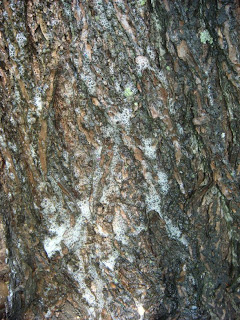Sunscreen Dispensers at State Parks Make It Easy to “Stay and Play Longer”
 |
| SPF dispenser at Waterbury Center State Park |
“We are always looking for
ways to encourage people to spend time outdoors and enjoy everything Vermont
has to offer,” said Craig Whipple, State Parks director for the Department of
Forests, Parks and Recreation. “We’ve had a great run of beautiful, sunny days,
and using sunscreen is an important part of being able to safely enjoy outdoor
activities,” Whipple said. “We want to make sure no one has to call it a day
just because they ran out of sunscreen.”
The sunscreen stations are a
joint effort by the Vermont Department of Health, State Parks and the skin
cancer education and prevention organization IMPACT Melanoma. The stations
are intended to provide convenient access to SPF 30 sunscreen, but they also to
serve as a reminder of how important it is to protect your skin from exposure
to the hot summer sun.
“Why are we doing this? The
answer is simple,” said Vermont Health Commissioner Mark Levine, MD. “Most skin
cancers can be prevented.” Dr. Levine explained that by taking a few basic
steps to protect yourself when outdoors, and avoiding indoor tanning booths,
the chances of developing melanoma go way down.
“The good news is it’s easy
to be sun smart,” said Dr. Levine. “Whenever you are outdoors –
in the mountains, at a park
or out on the lake – apply and reapply sunscreen, seek out shade, wear a hat,
sunglasses, and longer clothes when practical.”
Deb Girard is executive director of the national non-profit organization IMPACT Melanoma. She said they are pleased to be working with the Health Department to bring the sunscreen dispensers to parks and recreation areas around Vermont. “The sunscreen stations are a terrific way to deliver sun safety awareness to people when and where they most need to think about it,” said Girard. “Our goal at IMPACT Melanoma is to reduce the incidence of melanoma through education and early detection. This initiative is a creative and important way to help people understand the risk of skin cancer and what they can do to avoid it.”
Dr. Levine echoed Girard’s
emphasis on early detection. “Prevention is key,” said Dr. Levine. “Do what you
can to avoid overexposure to the sun, check yourself regularly, and talk with
your health care provider if you have concerns about any skin discoloration.”
Find free sunscreen
stations at Vermont State Parks and around the state: healthvermont.gov/summer-safety-tips.
Follow these simple steps for
staying safe in the sun:
- Apply a broad-spectrum
sunscreen that’s SPF (sun protection factor) 30 or higher,
even on overcast or cloudy days. Reapply sunscreen at least every two
hours and after swimming, sweating or drying off.
- Seek shade,
especially during midday hours.
- Be extra careful around
surfaces that reflect the sun’s rays, like
sand and water.
- Wear protective gear
like a hat with a wide brim and sunglasses. Wear a t-shirt, beach
cover-up, or even better, long-sleeved shirt and pants or long skirt.
- Skip the “base tan.” A tan indicates damage to your skin. Indoor and outdoor tanning are both dangerous. In 2012, Vermont became the second state to prohibit the use of commercial indoor tanning by youth under age 18.
The 2016-2020 Vermont Cancer
Plan is Vermont’s roadmap for addressing cancer: healthvermont.gov/wellness/reports/cancer
Learn more about IMPACT
Melanoma at impactmelanoma.org

.jpg)
.jpg)
Comments
Post a Comment
Feel free to let us know what you think.